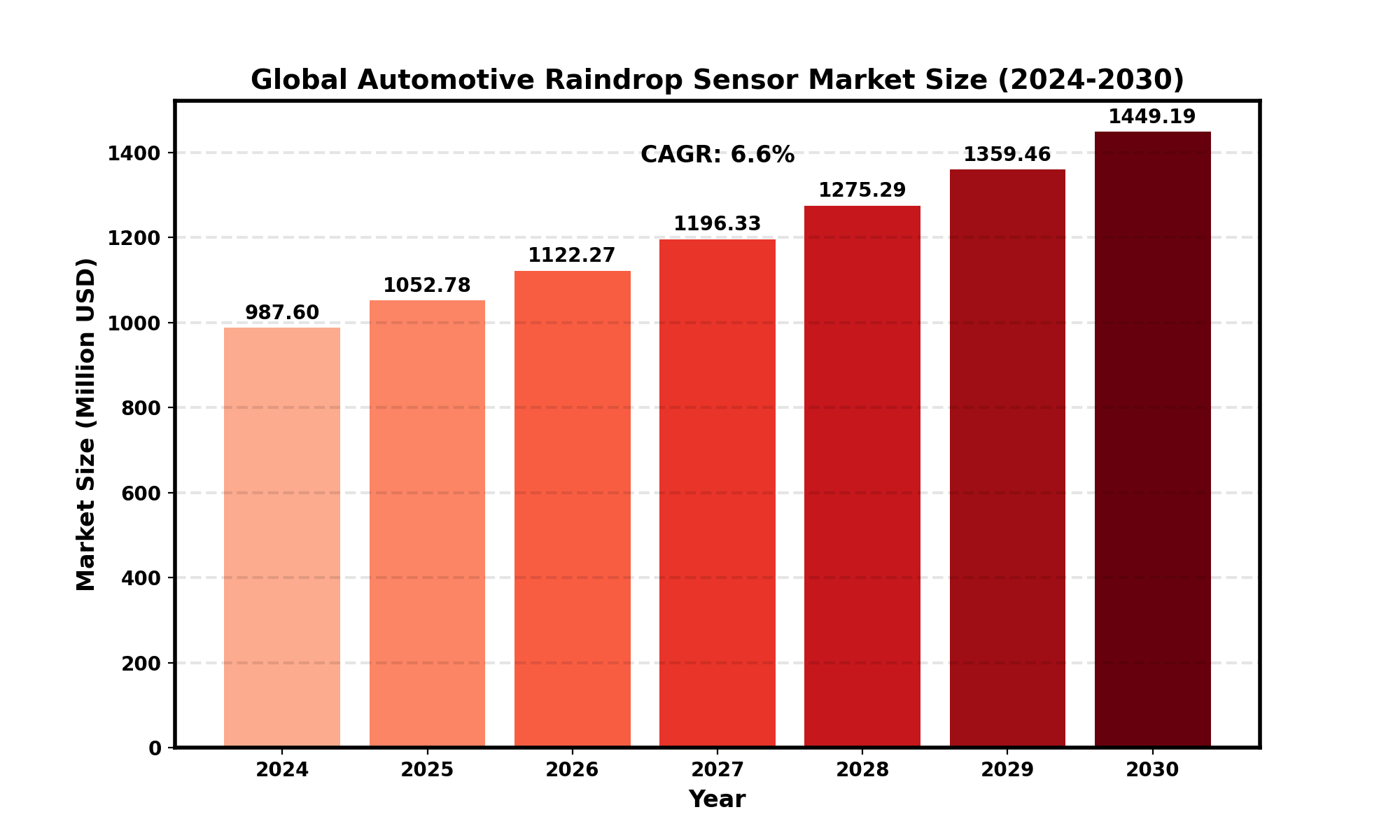TOP CATEGORY: Chemicals & Materials | Life Sciences | Banking & Finance | ICT Media

Download Report PDF Instantly
Report overview
The global Automotive Raindrop Sensor market size was valued at US$ 987.6 million in 2024 and is projected to reach US$ 1.44 billion by 2030, at a CAGR of 6.6% during the forecast period 2024-2030.
The United States Automotive Raindrop Sensor market size was valued at US$ 234.5 million in 2024 and is projected to US$ 334.8 million by 2030, at a CAGR of 6.1% during the forecast period 2024-2030.
Automotive Raindrop Sensors are devices that detect the presence and intensity of rain on vehicle windshields, automatically activating wipers and adjusting their speed for optimal visibility.
The global Automotive Raindrop Sensor market is growing robustly, driven by increasing vehicle electrification and the growing demand for advanced driver assistance features. In 2023, total production reached 45 million units, with premium vehicles accounting for 55% of market value. The market saw a 25% increase in demand for multi-function sensors combining rain sensing with other capabilities like light detection in 2023. Integration with autonomous driving systems is growing at 12% annually. Europe leads with a 40% market share due to high adoption rates in premium vehicles, while Asia Pacific shows the fastest growth at 7.5% CAGR. The industry is focusing on developing more sensitive and accurate sensors, with a 20% increase in R&D investments for advanced optical sensing technologies. The trend towards smart glass in vehicles is creating new opportunities, with sensors designed for integration with electrochromic windshields growing at 15% annually.

Report Overview
Raindrop sensor is basically a board on which nickel is coated in the form of lines.
This report provides a deep insight into the global Automotive Raindrop Sensor market covering all its essential aspects. This ranges from a macro overview of the market to micro details of the market size, competitive landscape, development trend, niche market, key market drivers and challenges, SWOT analysis, value chain analysis, etc.
The analysis helps the reader to shape the competition within the industries and strategies for the competitive environment to enhance the potential profit. Furthermore, it provides a simple framework for evaluating and accessing the position of the business organization. The report structure also focuses on the competitive landscape of the Global Automotive Raindrop Sensor Market, this report introduces in detail the market share, market performance, product situation, operation situation, etc. of the main players, which helps the readers in the industry to identify the main competitors and deeply understand the competition pattern of the market.
In a word, this report is a must-read for industry players, investors, researchers, consultants, business strategists, and all those who have any kind of stake or are planning to foray into the Automotive Raindrop Sensor market in any manner.
Global Automotive Raindrop Sensor Market: Market Segmentation Analysis
The research report includes specific segments by region (country), manufacturers, Type, and Application. Market segmentation creates subsets of a market based on product type, end-user or application, Geographic, and other factors. By understanding the market segments, the decision-maker can leverage this targeting in the product, sales, and marketing strategies. Market segments can power your product development cycles by informing how you create product offerings for different segments.
Key Company
Market Segmentation (by Type)
Market Segmentation (by Application)
Geographic Segmentation
Key Benefits of This Market Research:
Key Reasons to Buy this Report: